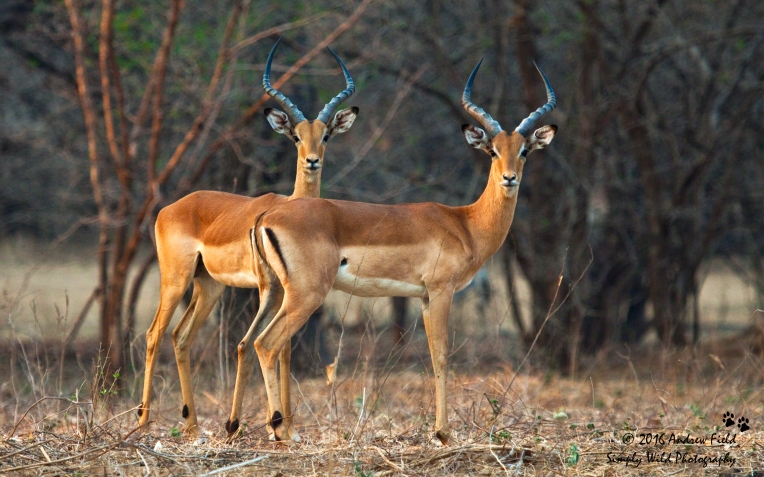
Two impala antelopes in full flight, escaping from wild dogs in their pursuit during a hunt one morning in Mana Pools area. An amazing experience for those who were lucky to find the wild dog pack early in the morning. The dogs left the young in a nursery pack while off on the hunt. Shortly thereafter these impala came bounding through our location.
(Canon EOS 5D MarkIII / EF 100-400mm f/5.6 L IS II USM +1.4xIII; 1/1000 sec; f/4; ISO 1000; 265mm)
Picture ©2014 Andrew Field – Simply Wild Photography
This image, and others of your selection, can be acquired from the author printed on fine art canvas of photographic paper for wall mounting.




